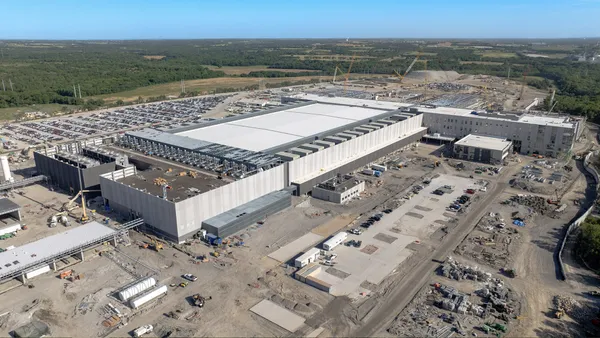Dive Brief:
- Odd-shaped tree parts such as knots and forks are typically scrapped or turned into mulch, but Massachusetts Institute of Technology researchers are examining how to use the unique properties of these throwaways as building components, according to an MIT press release.
- The "Y" sections where branches join the trunk are usable in construction as load-bearing members, and could be strong enough to support critical loads, according to the release. MIT associate professor Caitlin Mueller and her team are researching how to use these discarded sections of wood to replace steel or concrete building parts, which have a heavy environmental toll.
- Typical approaches to scrapping lumber — turning it into garden mulch or pellets to burn — release carbon into the atmosphere, according to the release. In addition, timber offers a natural form of carbon sequestration, according to the Institution of Structural Engineers. The research comes amid rising demand for low-carbon structures and building materials, as the construction industry grows increasingly concerned with climate change, according to the release.
Dive Insight:
While lumber buyers prioritize a straight grain in wood, which lends itself best to straight construction, Mueller told Construction Dive there's been recent industry interest in the possibilities of odd or non-traditional shapes.
"I had the sense, and others have had this too, I think that there's this amazing internal fiber structure that achieves what's essentially a rigid moment connection in a tree branch," Mueller said. "Each tree branch is a cantilever, through a really complex, intertwined, three-dimensionally curved alignment of internal wood fibers. We don't have the capabilities to make that today with 3D printing or other manmade manufacturing processes."
Mueller said that while this research might not lead to builders using tree knots in construction immediately, it could inspire them to find alternative uses for materials instead of trashing them.
Wood waste
To find tree forks to use, Mueller got help from the Urban Forestry Division of the city of Somerville, Massachusetts, which keeps a digital inventory of more than 2,000 street trees including location, diameter and condition data, according to the release.
When a swath of them were cut down to make way for a new school, workers sent the waste wood to MIT, where researchers trimmed, scanned and documented the forks. They then did a 3D scan of the pieces, and represented them in the database as three straight bars coming together at a single point, according to the release. Using this representation, researchers were able to match these wood pieces with nodes that are used in architecture.
The concrete industry is responsible for 8% of global carbon dioxide emissions, according to a 2019 study from MIT, and the steelmaking industry is responsible for another 7%, according to the International Energy Agency. As climate change worsens, builders and developers are increasingly looking for greener building strategies.
Lendlease, for example, is building a Chicago highrise with low-carbon concrete, and researchers from Worcester Polytechnic Institute are creating a concrete that removes carbon from the atmosphere and absorbs it. Construction companies such as Webcor are pushing ambitious waste-reduction goals.
"I think there's something about this idea that is really exciting because of the way it connects the sustainability imperative with new design vocabularies and with new digital technologies," Mueller said. "I think there's something about that, that makes this a kind of special thing to work on."














